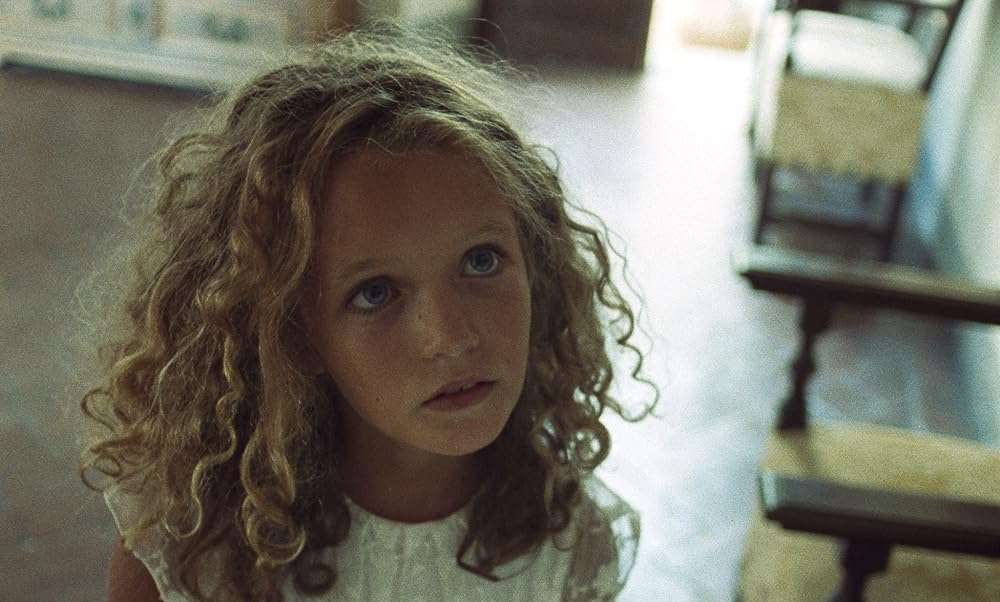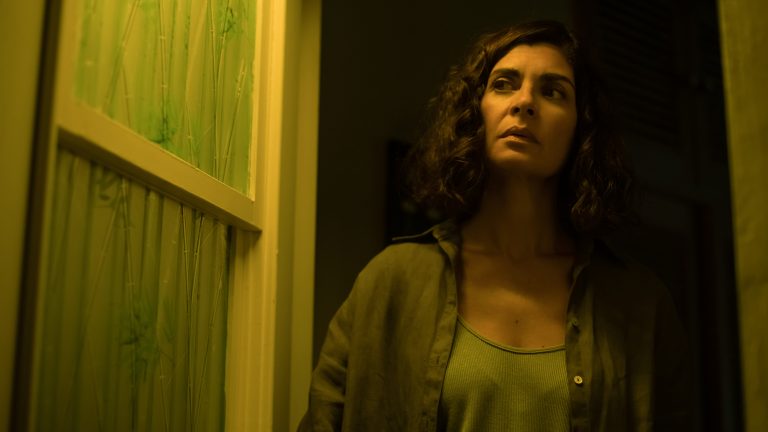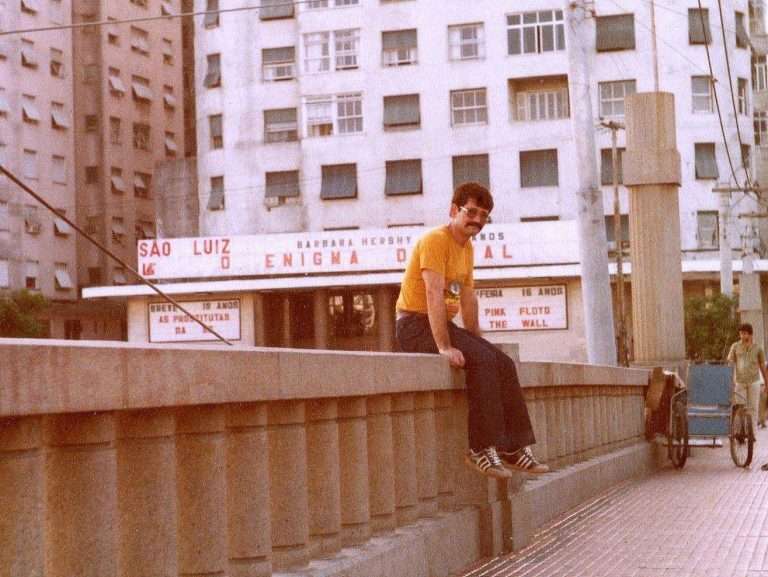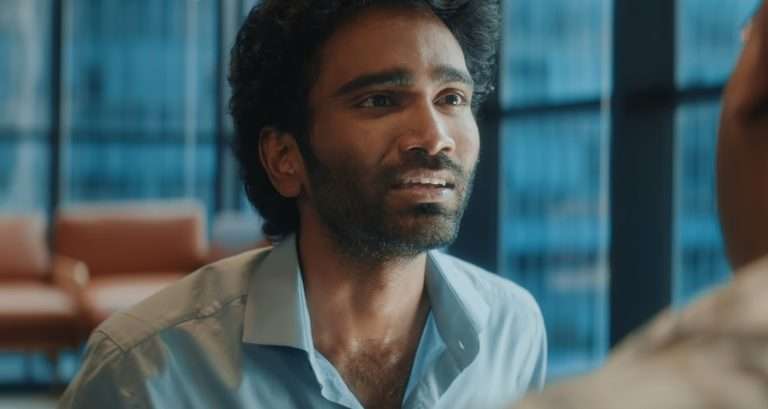In one of the opening scenes of Caverna (2023), we are informed that Giorgia (played by Giorgia Tomasi) is participating in an experimental theatre workshop that seeks to help the participants process their trauma and emotions. This can be a big breakthrough in their acting career, but the act of bringing their trauma to the surface can be a challenge for most, as will be evidently visible through the character of Giorgia. When Giorgia participates during the class and talks about how she dreams of smoking until people in the room start dying, we are presented with an enactment of this dream – The camera slowly moves to capture a room full of smoke and a group of human beings standing in the middle of it with cigarettes in their hand.
Also participating in this alternative theatre workshop is Lorenzo (played by Lorenzo Passaniti), whose dream of roses goes on to be enacted by the group. Their teacher pushes them to experience art through the eyes of their mind. However, the process takes a toll on both of them, especially Giorgia. Will Giorgia and Lorenzo see through till the end of this experimental workshop to become their best performer selves and defeat their inner demons from chasing them? Directors Contaldo and Swayze present a narrative richly layered with conversation, art, and performances in Caverna (2023).
Cinema has always portrayed the theatre as a place to explore one’s best performative self, making it a hotbed of creativity. Simultaneously, it has never stopped short of commenting on how these theatre spaces make (and break) the participant. If you remember Madeline from Madeline’s Madeline (2018), she is also persuaded by her teacher to dive into the depths of her psyche to shape her art.
The latter leads to an anxiety-inducing experience for Madeline as she witnesses her dreams – most of them surrounding her dysfunctional relationship with her mother – conflating into her art. Hence, the idea of an experimental theatre class or what it aims to do by recreating the actors’ dreams is not new in cinematic history.
It is then how Caverna (2023) goes about the same process that decides whether or not it successfully hacks into the audience’s imagination. Here, I must state that film may not cater to everyone’s tastes because it is disjointed, intentionally so, and makes one feel like they are in a dream-like experience that is difficult to separate from reality, especially with the sub-plot of a cyclops chasing around a princess in a forest.
For example, I am personally not a big fan of actors giving a concrete shape to dreams, so when Lorenzo’s dream about the roses finds itself being replicated on stage or when a literal, abstract art is painted on a white cloth to depict the idea of painting with one’s mind’s eye, it takes away the imaginative essence of thought for me. However, since the film is trying to hold up the interconnected nature of thoughts, feelings, and behavior to explore art and bridge the gap between the dream and the realities to help the artists encounter their trauma, it does a fairly good job.
The cameras follow Lorenzo and Giorgia too closely throughout the film, almost as if to help the audience walk in their shoes and experience their conversations closely. At multiple points in the film, the camera grazes around a party, capturing the many moods of human beings and acres of the Italian countryside to give us an idea of where the theatre workshop is situated. Does this experimental theatre occupy a liminal space that allows it to untangle rigid theatrical norms?
Perhaps. I was simultaneously impressed by the color palette chosen for this movie. The rich and grainy film perfectly encapsulates the European setting, especially the splash of red-colored seats in the theatre and the dim lighting when the actors sit around being coached by their teacher.
If you are patient with Caverna (2023) till the end of its 61st minute, you will be able to join all the dots in the narrative and understand the meaning of the haphazard metaphors – for example, walking around in a cave – sprinkled throughout the narrative. In this, I think the movie is doing something way smarter than we could have imagined – it is helping the audience connect their thoughts and feelings to produce a meta-theatrical viewer experience of art. Challenge the periphery of your imagination by watching Caverna (2023)!








![Minnal Murali [2021] Netflix review: Basil Joseph’s home-grown, ambitious superhero tale lands like a lightning](https://79468c92.delivery.rocketcdn.me/wp-content/uploads/2021/12/Minnal-Murali-Review-1-768x432.jpeg)
![Trees of Peace [2022] Netflix Review: A Deeply moving story of Resilience & The Human Spirit](https://79468c92.delivery.rocketcdn.me/wp-content/uploads/2022/06/Trees-of-Peace-2022-768x432.jpg)

